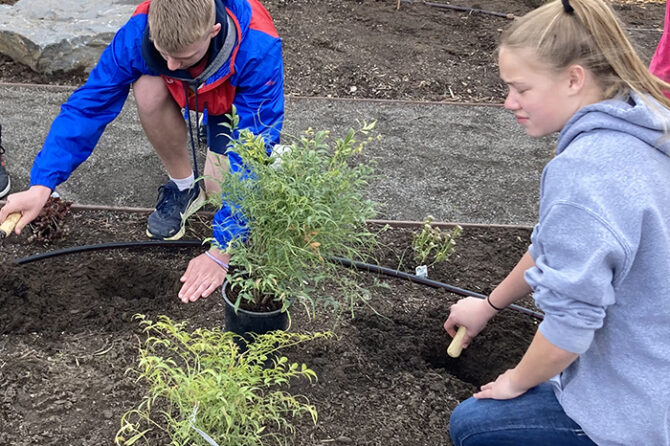Flowers signify love, well wishes, congratulations, holidays…
Church flower committee members take turns lovingly creating Sunday’s arrangement. Many of these are gardeners who perish the thought of purchasing cut flowers. But it can be a stretch at times.
Each flower bears its own message – the peony’s is ‘bashfulness’ while larkspur brings levity.
Bringing bouquets is one of my favorite things, but I can skimp on the flowers I bring into my home as ambivalence about cutting them from the garden washes over me. On fine days when it’s murderous to be at the computer I’ll dash out with some scissors and stick some flowers in a jar positioned close – but not too close – to the keyboard.
What a miracle that something as grand as an outdoor flower garden has the added ability of lavishing itself right into our hearts and homes. By all means this sort of thing ought to be encouraged.
The pleasant answer to all of the above is making a garden specifically for the production of cut flowers – ideally, a steady stream from spring through fall.
You make a cutting garden out of an out-of-the-way or unsightly spot as long as it gets a fair amount of sun, but if you have a vegetable garden, that’s the best place in my book. Not only do flowers and vegetables benefit one another; every inch occupied by a flower is one less vegetable to weed, water, harvest and eat or can on days you step outside and are hit with a hot blast as from an oven. Make your rows nice and wide and fix it so gathering an armload of flowers doesn’t involve wading through muck.
Cutting gardens are transient in nature; you needn’t concern yourself with attractiveness or layout except for efficiency’s sake. Cultivate and enrich the soil with compost, peat moss or chopped leaves and mulch young plants with 2-3 inches of chopped leaves, shredded newspaper or straw. Mulching keeps weeds down, retains moisture and contributes nutrients as it breaks down.
The better you treat your cutting garden, the more generous you will find it. Mix a granular, slow-acting fertilizer into the soil for consistent, balanced nutrition over many weeks. Periodic doses of liquid fertilizer sprayed on foliage boosts the energy of heavy blooming plants at the height of production.
Enthusiastically colorful annuals with tall sturdy stems often hold sway here, several of which may be direct sown. When the soil’s nice and warm, plant seeds of zinnia, sunflower and marigold.
Sometimes an early annual, when spent, can be supplanted by a later type, such as pulling out pansies to make way for marigolds or zinnias.
Conversely, long-blooming perennials – perhaps divisions of your own – return bigger and better every year. Coral bells, bleeding heart, purple coneflower and black-eyed Susan are welcome finds when trolling with shears. While daisies can prove overbearing in the garden proper they are quite useful as cut flowers.
The most luxuriant perennial flowers include breathtaking peonies, lush, fragrant lilies and bold dahlias of every stripe. Throw in a few plants with foliage that will bring texture, color and cohesiveness to your creations: artemisias, ferns, lamb’s ears, lavender and santolina are among those with velvety silver-gray foliage that is often aromatic.
Cut, cut, cut to keep them coming and to delay plants going to seed. Keep soil evenly moist and watch for the likes of aphid colonies or spit bugs. Pinch off infested tips and/or nail the foliage with a strong stream of water from the hose. Should they persist, bring in the insecticidal soap spray.
A small sampling of plants useful in a cutting garden
Annuals: Amaranth ‘Love Lies Bleeding’, anemone, bells of Ireland, campanula, bachelors’ button, cosmos, geranium, baby’s breath*, strawflower*, tall marigolds, stocks, Nicotiana alata or sylvestris, annual phlox, salvias, scabiosa (pincushion flower), snapdragon, statice*, sunflower, sweet pea, zinnias
Perennials: Yarrow, aster, campanula, carnation, delphinium, dianthus, foxglove, purple coneflower, garden phlox, poppies, black-eyed Susan, salvias, verbascum
Bulbs, rhizomes and tubers, oh yeah: Dahlias, peonies (all-time knockouts), irises. Plant lots of daffodils, tulips and grape hyacinth will multiply itself – and, in a perfect world, armloads of lilies.
Foliage: Ferns, coleus, dusty miller, eucalyptus, euphorbia, hosta, flowering cabbage or kale
* also good for drying






